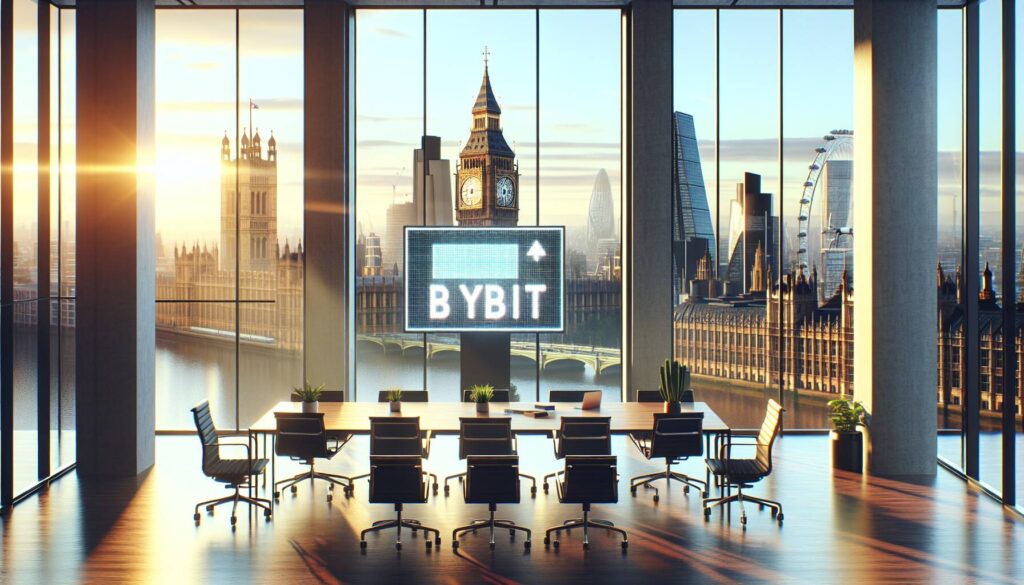The world of cryptocurrency is buzzing with innovation, particularly in the realm of tokenization of funds. According to a recent report from credit agency Moody’s Ratings, this booming sector is gaining traction but not without its fair share of risks that both investors and financial institutions need to acknowledge.
Prominent financial firms like BlackRock and Franklin Templeton have played pivotal roles in embracing this trend, pushing the market for tokenized money market funds to incredible heights, with a notable 350% growth in just one year, reaching a staggering market capitalization of $5.2 billion, as per data from rwa.xyz.
“When assessing tokenized funds, investors have to weigh not only the benefits of accessibility and transparency, but also the risks tied to the underlying technology, security vulnerabilities, scalability limitations and evolving regulations,” stated Cristiano Ventricelli, VP-senior analyst at Moody’s Ratings.
As more players enter the tokenization space, Moody’s highlighted some critical concerns. One major risk is the limited experience of many fund managers in this evolving market. Often operating with small teams, these fund managers may face what is known as key-man risk—where the departure of a single vital individual can destabilize the entire fund. Effective governance and risk management practices are essential to mitigate these vulnerabilities.
The report also pointed to potential pitfalls associated with blockchain technology. While smart contracts can streamline operations, they may also introduce vulnerabilities due to coding errors or security breaches. Using public, permissionless blockchains increases the accessibility of these funds but also exposes them to a higher likelihood of exploits. In this rapidly developing landscape, Moody’s advocates for robust smart contract audits and off-chain backups to bolster security.
Redemption mechanisms are another area of concern. The ability for investors to cash out their holdings should be designed carefully to allow conversions in both stablecoins and traditional fiat currency. This dual approach could serve as a buffer against unexpected events, such as stablecoin fluctuations or blockchain outages.
Furthermore, the report emphasizes the complexities posed by varying regulations across different jurisdictions. With tokenized funds operating in a patchwork regulatory environment, the enforceability of investor claims could encounter significant legal challenges. The structure of these funds, which may aim to provide token holders direct claims on underlying assets, still relies heavily on local laws and the strength of legal documentation.
In summary, while the excitement around tokenized funds is palpable, Moody’s Ratings urges stakeholders to remain vigilant and proactive in addressing these emerging risks. The potential of tokenization is immense, yet understanding and managing the associated challenges will be crucial for sustainable growth in this vibrant sector.

Key Points on the Tokenization of Funds
The rapid rise of tokenized funds presents both opportunities and significant risks for investors. Below are the critical aspects to consider:
- Rapid Growth of Tokenized Funds:
- Tokenized money market funds have seen a growth of roughly 350%, reaching a market capitalization of $5.2 billion.
- This trend is catalyzed by involvement from major financial institutions like BlackRock and Franklin Templeton.
- Benefits and Risks:
- Accessibility and transparency are notable benefits for investors.
- Risks include:
- Security vulnerabilities in the underlying technology.
- Scalability limitations of the tokenization platform.
- Challenges related to evolving regulations.
- Key-Man Risk:
- Many fund managers are inexperienced in the tokenization market.
- Reliance on a few individuals can destabilize funds if key executives leave or if governance structures are weak.
- Blockchain Risks:
- Smart contracts can improve operational efficiency but are vulnerable to coding flaws and malicious attacks.
- Public blockchains increase accessibility while exposing funds to numerous security threats.
- Recommendations include maintaining off-chain backups and rigorous smart contract audits.
- Redemption Mechanisms:
- Establishing redemption options in both stablecoins and fiat currency can mitigate risks related to stablecoin instability and blockchain outages.
- Regulatory Challenges:
- Tokenized funds operate across various jurisdictions, creating a complex regulatory landscape.
- Investor claims may face legal hurdles depending on local laws and the quality of fund documentation.
Investors need to weigh these factors carefully to navigate the tokenization landscape successfully and protect their investments.
The Rise and Risks of Tokenized Funds: A Comparative Insight
The burgeoning domain of tokenized funds, as explored in a recent report by Moody’s Ratings, has captivated the attention of major players in the financial sector, including titans like BlackRock and Franklin Templeton. This sector has seen an astonishing 350% growth in tokenized money market funds over the past year, reaching a whopping $5.2 billion in market capitalization, according to rwa.xyz data. However, as the allure of accessible and transparent investing draws more participants, it is essential to consider the comparative advantages and pitfalls this innovation presents compared to traditional investment vehicles.
Competitive Advantages: Tokenized funds offer unprecedented accessibility and transparency, democratizing investment opportunities that were previously exclusive to wealthier individuals. Unlike traditional funds, where entry barriers might prevent smaller investors, tokenized versions may enable fractional ownership, allowing for more diverse portfolios. Such democratization is a critical shift that aligns with the preferences of the modern, tech-savvy investor, potentially expanding the market significantly.
Moreover, the operational efficiencies introduced by blockchain technology can streamline processes like fund operations and transaction clearing, significantly reducing overhead costs. The appeal here is immense; a transparent, efficient fund could attract a larger pool of investors, thus enhancing liquidity and facilitating quicker buy/sell transactions.
Disadvantages and Risks: Nevertheless, the rapid rise of tokenized funds does not come sans risks. Moody’s highlights the limited experience of many fund managers in this nascent space, which raises valid concerns over key-man risk. Unlike established financial institutions that have seasoned management teams, many tokenized funds might rely heavily on a handful of executives whose sudden departure could destabilize operations. Investors must therefore exercise additional due diligence when evaluating such funds.
Another critical risk lies within the realms of technology and security. Smart contracts, while promising in terms of efficiency, are still vulnerable to coding flaws and malicious attacks. As recent breaches in the broader cryptocurrency landscape indicate, public blockchains, despite their advantages in accessibility, have shown to be susceptible to exploits that could significantly impact investor confidence.
The notion of redemption mechanisms also poses a fragile aspect of tokenized funds. While the flexibility of allowing withdrawals in both stablecoins and fiat currency is commendable, the operational logistics around these mechanisms must be robust to handle potential events like stablecoin depegs or blockchain outages, both of which could leave investors exposed in moments of market stress.
Furthermore, the intricacies of regulatory environments across jurisdictions add another layer of complexity and risk. Unlike conventional funds with established legal frameworks, tokenized versions may face hurdles in enforceability depending on local legal standards and documentation strength. This patchwork of regulations can pose significant challenges for investors seeking recourse in their investments.
Who Benefits and Who May Face Challenges? Investors seeking innovative and agile investment options that align with the digital age may reap substantial benefits from tokenized funds. However, those with a low risk tolerance or limited understanding of blockchain technology might find themselves navigating a precarious landscape filled with unforeseen challenges. Institutional investors and hedge funds with robust risk management frameworks could successfully leverage tokenized assets to enhance their portfolios, while retail investors may be advised to proceed cautiously, ensuring they are well-informed about the intricacies and risks involved.

















